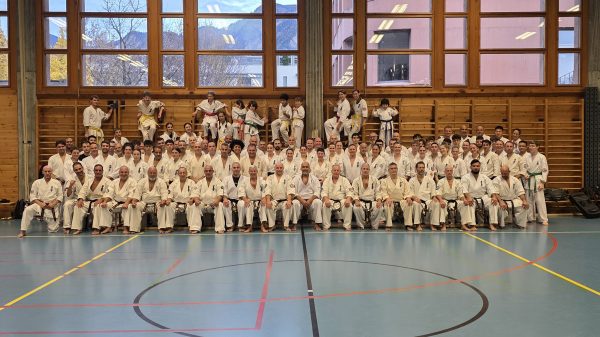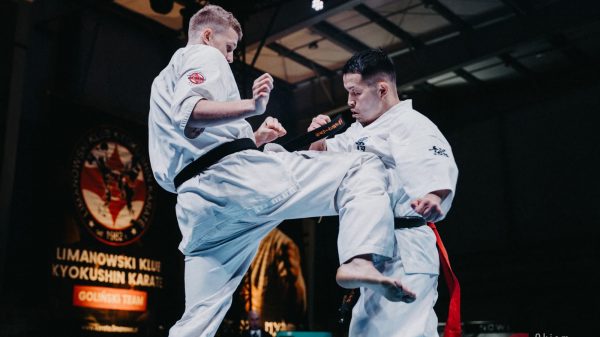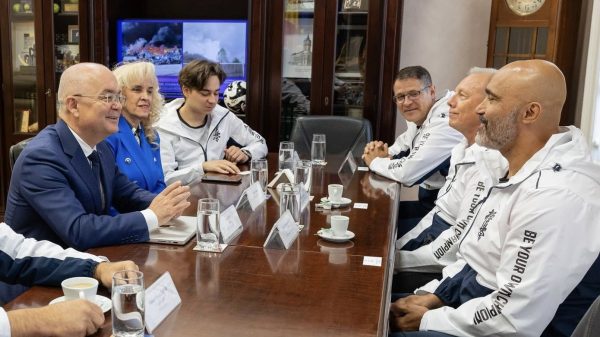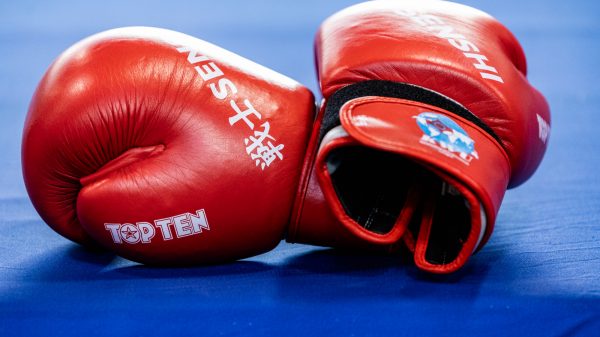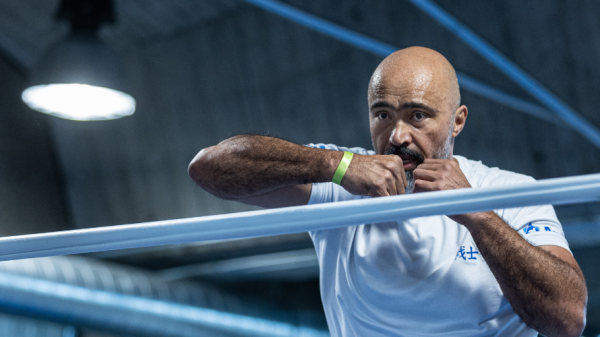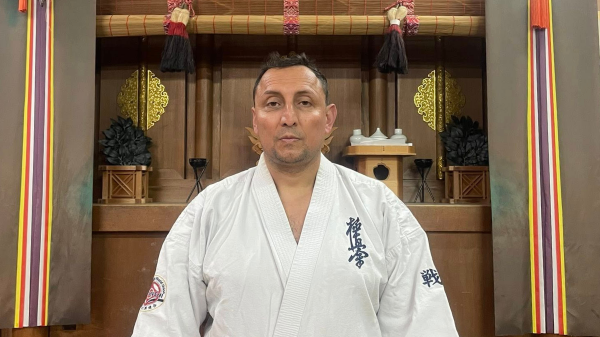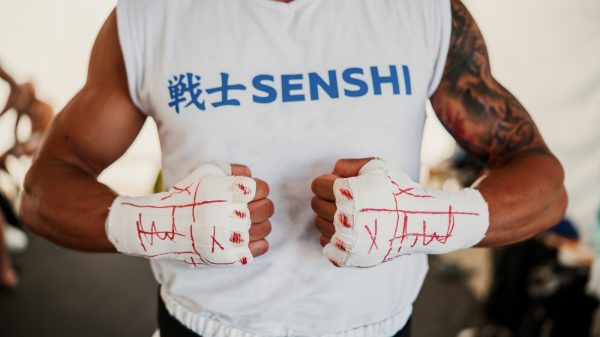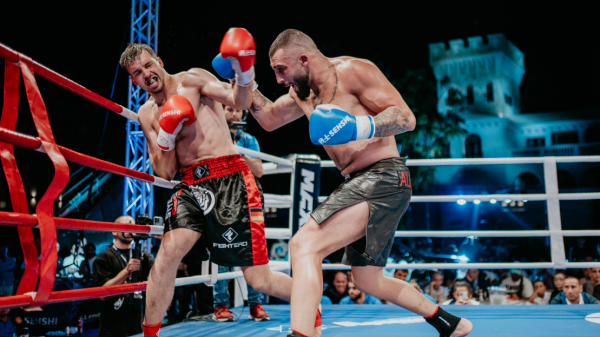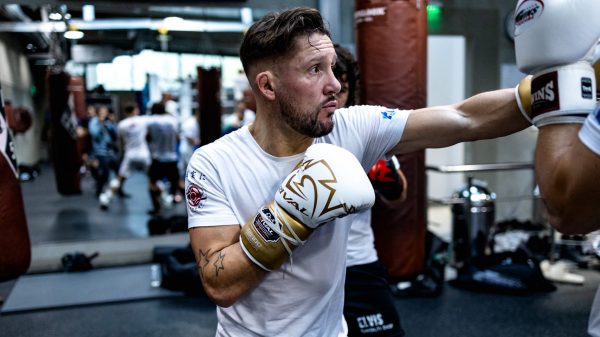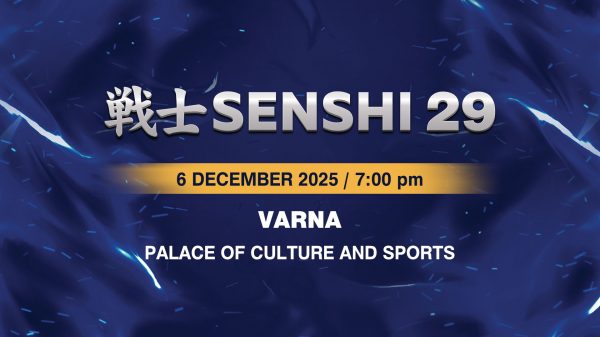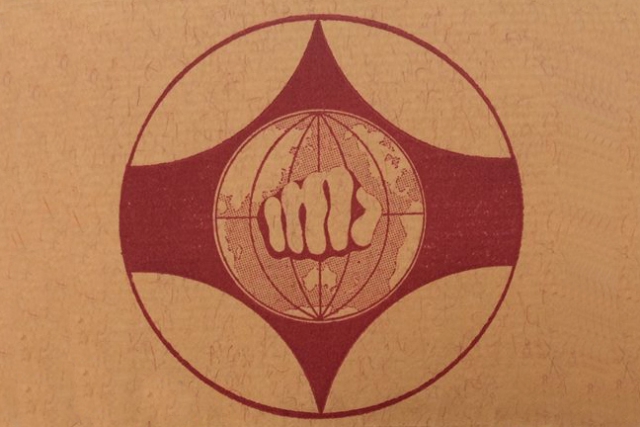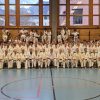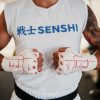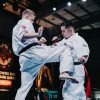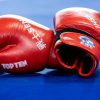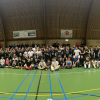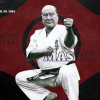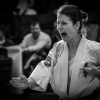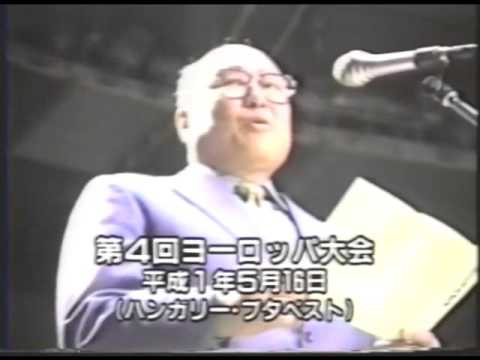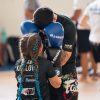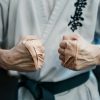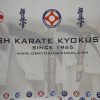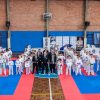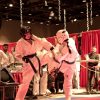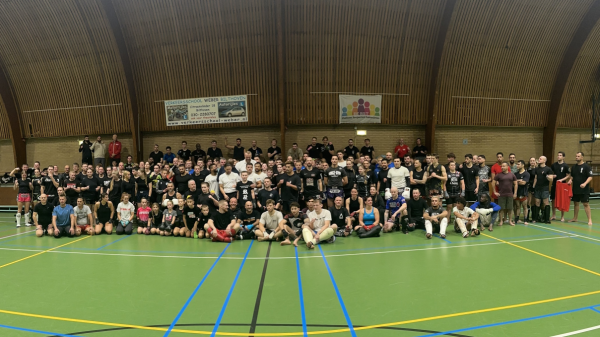Gaze upon the sky through the family crest of Masutatsu Oyama.
In each dojo, continuing the work of Masutatsu Oyama, you can find two main symbols of the school Kyokushinkai – Kanji and Kanku.
With kanji it makes sense, it is he the calligraphic writing of the name of the school.
And with the symbol Kanku, not everything was so easy, despite well-known and widespread stories about this sign.
Faithful followers of the style heard or read that Kanku (観空) is translated as “contemplate the sky” and symbolizes look at the sun through clasped hands, and the fact that the prototype of this symbol was the position of the hands in the started movements of the kata “Kanku”.
As an example, a fragment of an article by Alexander Tibulevich (Japanese translator and a friend of Kancho Hatsuo Royama).
On the meaning of the word “Kanku”
The word “Kanku” is written as two characters “観空”. The first character means “to look; to contemplate”, the second, in this case, means “sky”. Thus, the word “Kanku” literally translates as “to contemplate the sky.”
On the meaning of the symbol “Kanku”
The symbol represents a stylized form of the palms of the hands, united in a certain way. The circle inside symbolizes the sun.
The prototype of this symbol was the position of the hands before performing the kata “Kanku”. At the beginning of this exercise, your hands are raised to the sky, so that the thumbs and forefingers connect and form a rhombus. Hands are facing the sun. The sun is the source of life on earth, so it is believed that this form reflects peacefulness.
This interpretation of the symbol Kanku suits most questions and after reading the explanation does not arise. Didn’t arise before the post on Facebook – “Symbol Kanku is actually the family crest of Oyama”.
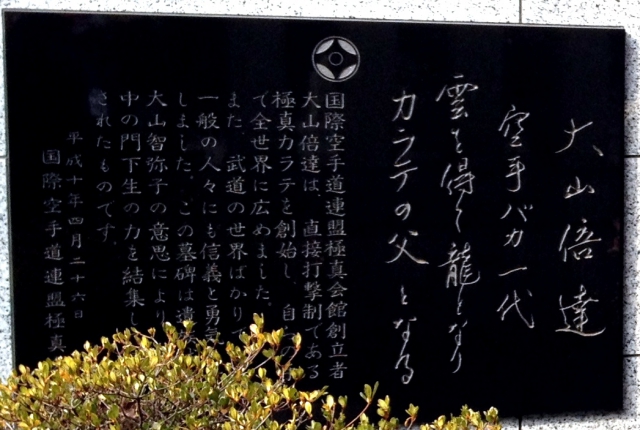
It was a granddaughter of Masutatsu Oyama who wrote the post. Delphine Momokarin Oyama.
Delphine Momokarin Oyama – daughter of Grace-Eki Oyama middle daughter of Mas Oyama, was born on the day of Sosai’s death. And here’s what Oyama’s granddaughter said:
Sign Kanku is actually our family crest, and my grandfather used it for the Kyokushin. My aunts had this sign embroidered on their “adulthood kimono”. My mother told me about it. The creation of Kanku is a well-known story, and I have heard it from others.
In fact, this symbol appeared before the creation of Kyokushin. It’s definitely over 60 years old.
Traditionally in Japan with a new family, a new family crest is made – “sign of the house” – Kamon. Grandfather [Mas Oyama] made his own – it symbolizes the sun and the hands – Kanku.
On the official kimono of the family (wedding, adulthood). On tradition, a Kamon is being embroidered. In this photo, the kimono is about 28 years old. My mother kept kimono with the family crest, it is older than the official creation of Kyokushin.
Kamon (jap. 家紋, “sign of house”) – In Japan – It is a kind of a family crest. To some extent, Kamon is an original sign of ancestry, family, or man, famous enough to have a personal symbol. This sign is not a family crest in the general sense, as it is not a heraldic emblem of ancestry.
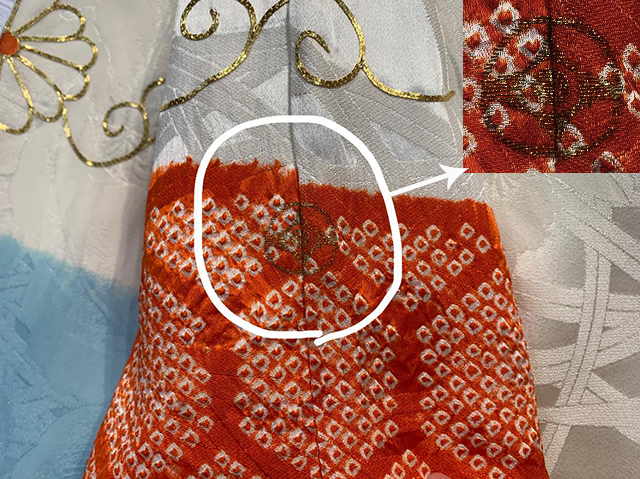
Traditionally, Kamons were depicted on the kimono and haori of the nobility in Japan. Ancestry signs are stylized images of flowers, plants, animals, feathers, man-made objects, and the like, usually, fit into a circle. Traditionally, kimonos have a two-tone color.
In modern Japan virtually every family has its Kamon, however, these signs are used quite rarely. Currently, Kamon has firmly entered into use as a symbol of Japanese antiquity.
The emergence of Kanku – is a known history for the family of Mas Oyama and those closest to them, almost entirely unfamiliar to mainstream karate.
Now you know that day after day you train not just under the image of Kanku – the symbol of Kyokushin, but also under the family crest of the house of Oyama.
Source: SuperKarate.ru


